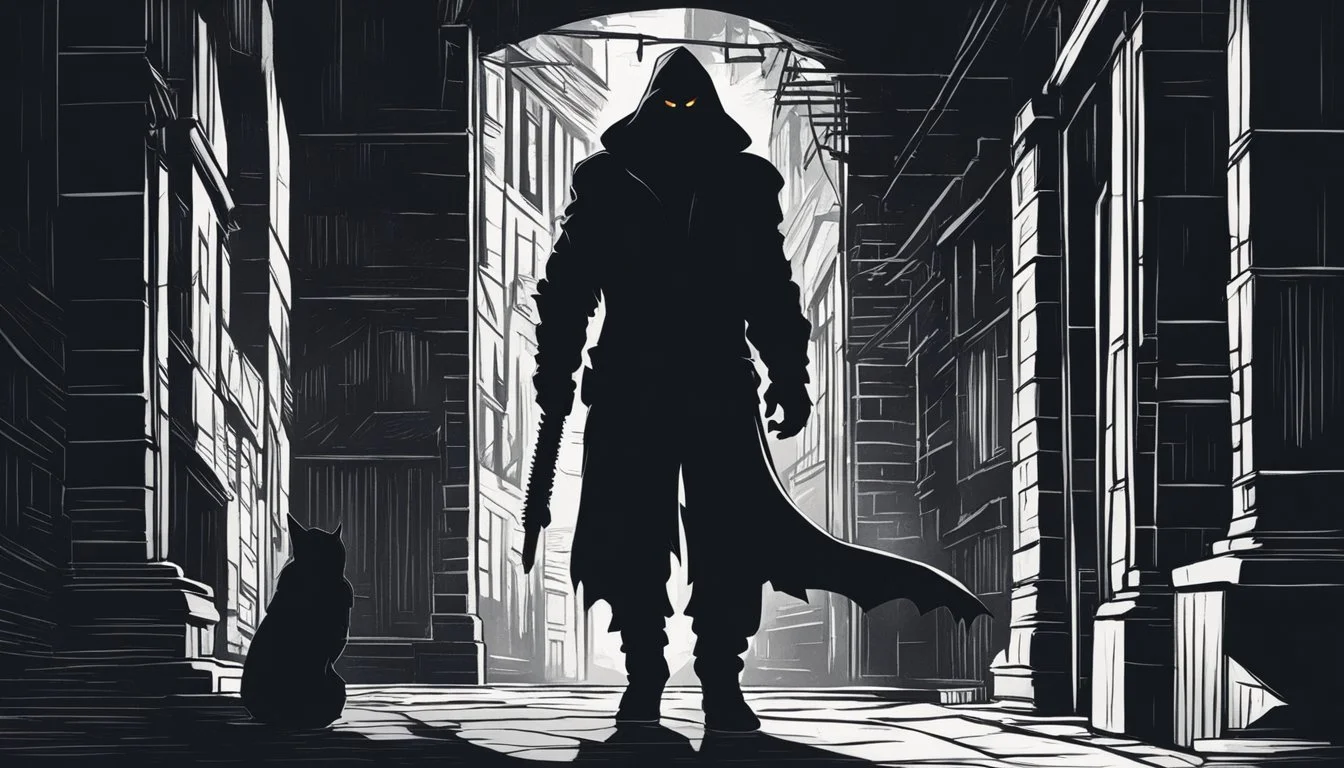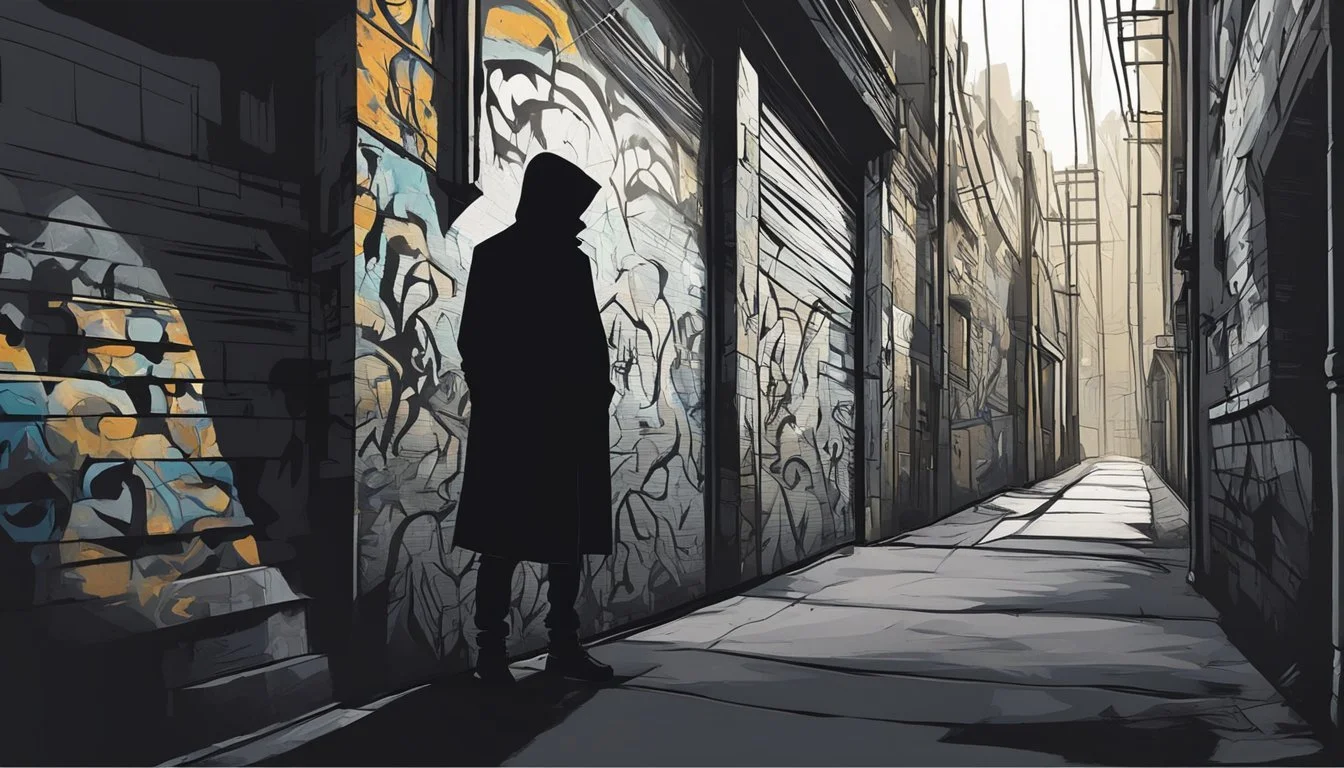California's Silent Predator: William Choyce's Deadly Double Life
Serial Killer Unmasked
William Jennings Choyce led a chilling double life in California during the 1970s and 1990s. On the surface, he was a married father living in Oakland. Beneath this facade, Choyce was a serial rapist and killer who targeted sex workers.
Choyce's reign of terror spanned decades, with a series of rapes and murders that left communities in Oakland and Stockton shaken. His victims included Victoria Bell of Oakland, as well as Gwendolyn Lee and Lawanda Beck from Stockton. The full extent of his crimes remained hidden for years.
Despite his outward appearance of normalcy, Choyce harbored dark impulses from a young age. His wife, Alice, noted his penchant for strip clubs and sex workers early in their relationship. This behavior continued throughout their marriage, hinting at the predatory nature that would ultimately lead to his downfall.
The Emergence of William Choyce: A Hidden Threat
William Choyce's transformation from an ordinary individual to a dangerous predator unfolded gradually. His early experiences and environment played a crucial role in shaping his criminal path.
Early Life and Behavioral Indicators
William Jennings Choyce was born on December 19, 1953, in Alameda County, California. He spent his formative years in Oakland, a city that would later become the backdrop for some of his crimes.
Choyce's childhood was marked by instability and trauma. He grew up with an abusive mother, which likely contributed to his psychological development and future behavior patterns.
Despite these challenges, Choyce managed to maintain a facade of normalcy in his early adulthood. He married Alice Swafford and became a father to a daughter named Crystal.
Path to Predation: Choyce's Descent into Violence
As Choyce entered adulthood, warning signs of his future crimes began to emerge. His wife, Alice, noted his frequent visits to strip clubs and his interactions with sex workers early in their relationship.
This behavior persisted throughout their marriage, indicating a deep-seated fascination with the sex industry. Choyce's interests gradually evolved into more sinister activities.
His criminal activities are believed to have begun in the 1970s, focusing primarily on sexual assaults. Over time, his crimes escalated in both frequency and severity.
By the late 1990s, Choyce had become a full-fledged serial killer. He targeted vulnerable individuals, particularly sex workers, subjecting them to brutal rapes and murders.
A Chronicle of Crimes: From Kidnapping to Murder
William Choyce's criminal career spanned years, evolving from sexual assaults to brutal murders. His actions left a trail of victims and trauma across Oakland and beyond.
First Documented Offenses: The Beginnings of a Rapist
Choyce's criminal path began with a series of sexual assaults in the Oakland area. He targeted vulnerable women, often sex workers, using his knowledge of local streets to his advantage.
Choyce would approach his victims, forcibly kidnap them, and take them to secluded locations. There, he subjected them to violent sexual attacks.
His first documented offense occurred in the early 1990s. Choyce's method of operation remained consistent, involving abduction and rape.
Escalation: Transforming into a Serial Killer
As time passed, Choyce's crimes escalated in severity. He transitioned from sexual assault to murder, becoming a serial killer.
His first known murder victim was Gwendolyn Lee Chaney in 1988. Choyce abducted her in Oakland, sexually assaulted her, and then fatally shot her.
Two more murders followed: Victoria Bell in 1994 and Lawanda Beck in 1997. Both women were found shot to death in industrial areas of Stockton, California.
These killings marked Choyce's transformation from a serial rapist to a serial killer, leaving a wake of devastation in his path.
Signature and Modus Operandi
Choyce developed a distinct signature in his crimes. He consistently targeted sex workers or women in vulnerable situations.
His modus operandi included:
Abduction using his vehicle
Taking victims to isolated locations
Sexual assault
Murder by gunshot
Choyce often disposed of bodies in industrial areas, attempting to conceal his crimes. He used his knowledge of Oakland's geography to evade detection.
His dual life as a family man and predator allowed him to operate undetected for years, intensifying the trauma inflicted on his victims and their families.
Victims of a Silent Predator
William Choyce left a trail of devastation in his wake, claiming the lives of three women in Oakland and Stockton. His victims were targeted during vulnerable moments, their stories forever silenced by his brutal acts.
Remembering Victoria Bell
Victoria Bell, 41, fell prey to Choyce in Oakland on April 17, 1988. A mother and beloved community member, Bell's life was cut tragically short. She was last seen near 87th Avenue and International Boulevard, an area known for its high crime rate.
Bell's body was discovered in an industrial area, discarded like refuse. The manner of her death bore the hallmarks of Choyce's modus operandi - strangled and shot. Her murder remained unsolved for years, leaving her family without closure.
The Tragic Fate of Gwendolyn Lee and Lawanda Beck
Gwendolyn Lee, 33, and Lawanda Beck, 37, both met their untimely ends in Stockton. Lee disappeared on August 11, 1997, last seen in an area frequented by sex workers. Her body was found two weeks later in a field off Arch Airport Road.
Beck vanished on August 12, 1997, just a day after Lee. Her remains were discovered in the same field as Lee's, indicating a chilling pattern. Both women were strangled and shot, mirroring the fate of Victoria Bell.
These victims, often marginalized by society, deserved justice. Their deaths exposed the dangers faced by vulnerable individuals and the importance of protecting all members of our communities.
The Capture and Prosecution of a Serial Predator
William Choyce's reign of terror came to an end through meticulous police work and forensic evidence. His arrest and subsequent trial exposed the full extent of his crimes.
Investigative Trails and Arrest
In 2002, Oakland Police made a breakthrough in cold case investigations. DNA evidence linked William Choyce to multiple unsolved murders. Detectives tracked Choyce's movements across California, piecing together a pattern of violence spanning decades.
The arrest occurred on September 14, 2002. Law enforcement surrounded Choyce's home in Stockton, taking him into custody without incident. Searches of his property yielded crucial physical evidence connecting him to crime scenes.
Investigators discovered Choyce had led a double life. He worked as a tow truck driver, maintaining a facade of normalcy while committing heinous acts.
Legal Proceedings and the Judicial Outcome
The trial began in 2008, six years after Choyce's arrest. Prosecutors presented DNA evidence, crime scene analysis, and survivor testimony. The defense argued inconsistencies in witness accounts but struggled against the weight of forensic proof.
On May 15, 2008, the jury found William Choyce guilty on three counts of first-degree murder. They also convicted him of several sexual assault charges. The penalty phase followed, where victims' families gave impact statements.
On July 18, 2008, the court sentenced Choyce to death. He joined other convicted killers on California's death row at San Quentin State Prison. The case highlighted advancements in forensic technology and cold case resolution.
Survivors' Tales: Living with Trauma and Terror
The aftermath of William Choyce's crimes left deep scars on his victims and family. Those who survived faced ongoing struggles with trauma, while his daughter grappled with the shocking revelation of her father's double life.
Narratives of the Abducted
Choyce's victims endured horrific ordeals. Survivors reported being bound and raped, living through moments of sheer terror. The trauma inflicted had lasting impacts, with many experiencing nightmares, anxiety, and trust issues for years after. Some sought therapy to process their experiences.
One survivor described feeling "trapped in a nightmare" during her captivity. Another spoke of the challenge of reclaiming her life, saying, "Learning to feel safe again was the hardest part."
Familial Perspective: Crystal Choyce's Ordeal
Crystal Choyce's world shattered upon learning of her father's crimes. She appeared on the TV show "I Lived with a Killer" to share her story. Crystal spoke of the cognitive dissonance between her childhood memories and the monstrous acts her father committed.
"It was like discovering my whole life had been a lie," Crystal said. She described feelings of guilt and shame, despite being innocent of her father's actions. Crystal emphasized the importance of supporting victims and their families.
Analyzing the Mindset of William Choyce
William Choyce's criminal behavior stemmed from a complex interplay of psychological factors and life experiences. His actions revealed a disturbing pattern of violence and exploitation, particularly targeting vulnerable women.
Psychological Profile of a Serial Killer
Choyce exhibited traits common among serial killers, including a lack of empathy and a desire for control. His predatory behavior focused on sex workers, indicating a possible need to dominate those he perceived as powerless.
Choyce's criminal activities suggested a deep-seated rage, potentially rooted in childhood trauma or unresolved emotional issues. His ability to maintain a seemingly normal life while committing heinous crimes pointed to a capacity for compartmentalization.
The repetitive nature of his offenses hinted at compulsive behavior, driven by inner urges he struggled to control. This cycle of violence likely provided a temporary sense of power or relief from psychological distress.
Family and Social Dynamics
Choyce's relationship with his family, particularly his mother, played a crucial role in shaping his mindset. Reports of an abusive mother suggest early experiences of trauma and dysfunction.
His marriage to Alice Swafford appeared outwardly normal, masking his darker tendencies. This dual life - family man by day, predator by night - highlighted his ability to navigate different social spheres.
Choyce's attraction to strip clubs and sex workers, even during his marriage, indicated unresolved sexual issues and a possible Madonna-whore complex. This dichotomy in his view of women likely contributed to his targeting of sex workers.
His ability to maintain employment and family life while secretly committing crimes demonstrated a high level of manipulative skill and emotional detachment.
Media Representation and Public Perception
William Choyce's case garnered significant media attention, shaping public perception of his crimes. News coverage and documentaries played crucial roles in portraying Choyce and his victims.
Coverage of the Crimes
Media outlets extensively reported on William Choyce's criminal activities. Local newspapers and television stations in California covered the investigations and trials. Headlines often emphasized the brutal nature of Choyce's crimes, using terms like "serial killer" and "predator" to describe him.
Some reports focused on Choyce's double life as a seemingly normal family man and security guard. This angle intrigued the public, leading to increased interest in the case. News articles frequently included quotes from law enforcement officials and prosecutors, highlighting the severity of Choyce's actions.
Documentary Narratives: Beyond the Headlines
Several documentaries explored William Choyce's case in greater depth. These productions provided more comprehensive accounts of his crimes and their impact on victims' families. Interviews with detectives, forensic experts, and survivors offered insights into the investigation process.
Documentaries often delved into Choyce's background and potential motivations. Some examined societal factors that may have contributed to his ability to evade detection for years. These narratives helped shape public understanding of the case beyond initial news reports.
The documentaries' portrayal of Choyce influenced public perception, sometimes generating sympathy for the victims and outrage toward the perpetrator. They also raised questions about the criminal justice system's effectiveness in identifying and apprehending serial offenders.
The Aftermath: Sentence and Incarceration
William Choyce received the harshest punishment available under California law for his heinous crimes. His sentencing marked the end of his reign of terror and the beginning of his life behind bars.
San Quentin State Prison: Choyce's Final Destination
William Choyce was transferred to San Quentin State Prison after his conviction. This maximum-security facility houses California's male death row inmates. San Quentin, located north of San Francisco, has been Choyce's home since 2008.
The prison's death row unit is notoriously overcrowded. Inmates spend up to 23 hours per day in their cells. They have limited access to prison programs and facilities.
Choyce's daily life consists of rigid routines and tight security measures. He takes his meals in his cell and exercises alone in a small yard. Visits from family or legal counsel occur through thick glass barriers.
Legal Appeals and Death Row Reflections
Like many death row inmates, Choyce has pursued legal appeals to challenge his conviction and sentence. The appeals process in capital cases can be lengthy and complex. It often involves multiple stages of review at both state and federal levels.
Choyce's attorneys have filed appeals citing various legal grounds. These may include claims of procedural errors during his trial or challenges to the constitutionality of his sentence. The appeals process can take years or even decades to conclude.
During this time, Choyce remains on death row. He faces the psychological burden of living under a death sentence while his case moves through the courts. Some death row inmates use this time for reflection or to pursue educational opportunities available within the prison system.
Prevention and Awareness: Learning from the Past
The Choyce case highlighted critical areas for improvement in law enforcement and public safety. Key lessons emerged around enhancing investigative techniques, supporting victims, and empowering communities through education and awareness.
Law Enforcement Techniques and Victim Support
Oakland Police implemented new protocols for handling sexual assault cases after the Choyce investigation. Specialized training focused on evidence collection and victim interviewing. A dedicated sexual assault unit was formed to ensure cases received proper attention.
Victim support services expanded significantly. Counseling and advocacy programs were established to assist survivors throughout the legal process. A 24-hour crisis hotline provided immediate access to resources and support.
DNA analysis capabilities were enhanced to more quickly identify potential serial offenders. Improved information sharing between agencies helped connect related cases across jurisdictions.
Public Awareness and Crime Prevention Strategies
Community outreach programs educated residents on personal safety and situational awareness. Self-defense classes were offered free of charge in high-risk neighborhoods.
A public awareness campaign highlighted warning signs of predatory behavior. Billboards, social media, and local news segments shared prevention tips and reporting procedures.
Neighborhood watch groups formed to create a network of vigilant citizens. An anonymous tip line allowed people to safely report suspicious activity.
Schools implemented age-appropriate safety curriculum to teach children about boundaries and trusted adults. Parent workshops provided tools for discussing difficult topics with kids.







